You’ve scrubbed your car inside and out and gotten rid of those lingering crumbs and annoying smudges on the windshield — but how are your tires doing? There’s a good chance all that wear and tear on your tires has left them in need of some extra love! Luckily, cleaning your vehicle's tires is easy and can be done in four easy steps.
Your tires are the only part of your vehicle coming in contact with the road. That means they are usually the first thing to get dirty! And while a little dirt won't hurt, what could be hiding underneath the dirt and grime just might — think nails, cracks in the sidewall, and low or uneven treadwear. Follow these four easy steps to get your tires squeaky clean to help you determine if it's time for new tires from Firestone Complete Auto Care.
To start your tire-washing process, you'll need a bucket, microfiber towels, a hose and spray nozzle, and a soft-bristled brush. For a deeper clean, use a light-duty pressure washer, a waxing mitt, and a wheel brush.
Use non-abrasive cleaning agents like dish soap, warm water, and wheel wax. If you’re curious about how to clean car tires naturally, try using a 70/30 mix of white vinegar and baking soda.
After you’ve collected your tools and materials, rinse off all the loose dirt using your spray nozzle or the lowest setting pressure washer (if you have one). Try to work the water from multiple angles — above, below, and both sides — to knock out the most grime from the interior of the rim.
After you've rinsed the tire, scrub the surface thoroughly. Begin with the tires, and move on to the wheels to avoid having tire grime drip onto a clean wheel face. With your bristled brush, scrub the tire with warm water and dish soap (about a tablespoon of soap per gallon of water). For stuck-on grime, let the soap mixture sit on the tire for a few minutes to help soften things up. Then, repeat scrubbing and rinsing as much as you need.
Then, repeat scrubbing and rinsing as much as you need.
Once your tires are glistening, you can start washing the surface of the wheel. Wet the wheel face, and use your brush with warm, soapy water to scrub everything down. If you want to apply a natural cleaning solution on your chrome wheels, pour equal parts of white vinegar and water into a spray bottle and spritz onto the wheels to melt away stains.
Use a smaller brush to tackle tougher spots on the wheels, then fully dry both the tire and the wheel with a clean, microfiber towel.
While a wax application isn’t totally necessary, it’s the perfect final step to get your tires looking their best. For maximum results, apply a cream or paste wax with a waxing mitt, and make sure to follow the instructions provided on the container. After applying the wax, give it a final polish with a microfiber cloth, and marvel at that amazing shine!
Cleaning your tires is important if you want your car to look its best! Since tires are the only part of your vehicle that touches the road while you’re driving, they can require a bit more TLC than the rest of your ride when it comes to keeping them clean.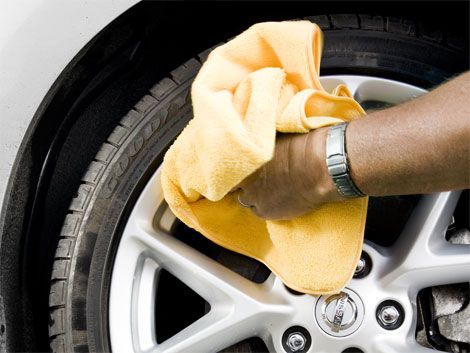
Aside from dirty wheels not being aesthetically-pleasing, cleaning your tires is also a great way to limit corrosion or similar damage. Letting dirt and grime hang out too long can cause your wheel finishes to peel and can even make the rims more porous (which could create tire pressure leaks).
Cleaning your tires on a routine, bi-monthly basis can help remove the salt, dust, and oil buildup that are a natural part of driving and keep your vehicle in top shape for years to come.
Paying attention to your tires’ health is essential in helping extend their lifecycle and keeping things running smoothly out on the road.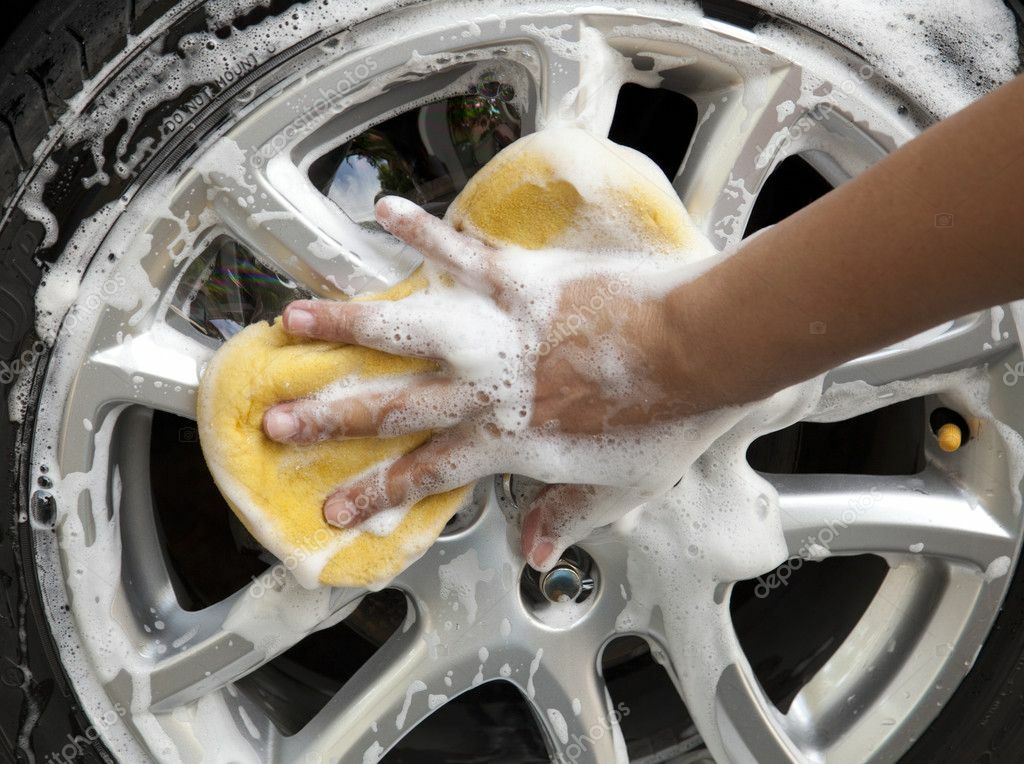 If you’re cleaning your tires and notice that any one of your tires is balding, wearing unevenly, cracking on the sidewall, or has an obstruction, it's time to make an appointment at Firestone Complete Auto Care. We provide expert tire repair, alignment services and can even help you pick out a whole new set of tires for your vehicle! Whatever your vehicle needs may be, our team is here to get your car back on course.
If you’re cleaning your tires and notice that any one of your tires is balding, wearing unevenly, cracking on the sidewall, or has an obstruction, it's time to make an appointment at Firestone Complete Auto Care. We provide expert tire repair, alignment services and can even help you pick out a whole new set of tires for your vehicle! Whatever your vehicle needs may be, our team is here to get your car back on course.
Tires are usually the dirtiest parts of your car, but regular cleaning is an important part of preventative maintenance. It removes any buildup of brake dust, road grime and other elements that could potentially damage the tires.
Your choice of cleaning product is equally important. A problem commonly known as "brown tires" happens if you've used caustic degreasers or harsh chemicals for wheel cleaning and/or neglected to follow cleaning with a tire protectant.
Car tires have rubber conditioners, antiozonants, and UV absorbers in them to retain their flexibility, and protect them from the elements and everyday wear-and-tear.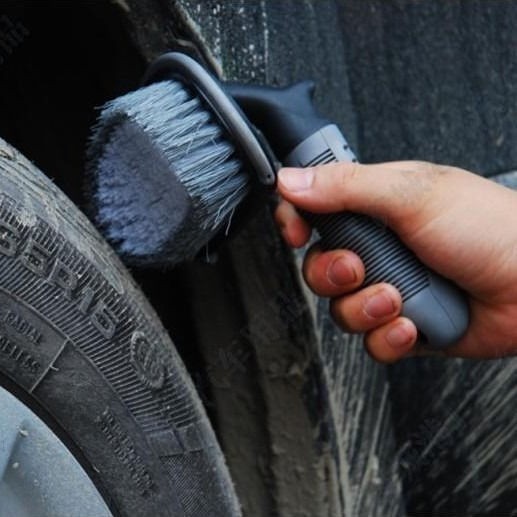 Using the wrong cleaner can cause these to leach out, leaving you with discoloration and cracking. This is known as dry rot.
Using the wrong cleaner can cause these to leach out, leaving you with discoloration and cracking. This is known as dry rot.
Detailers tend to turn to commercial wheel cleaners when they're looking to clean car tires. These tend to use a mixture of acids, ammonia-based chemicals, solvents, and water. The acids may dissolve brake dust and road grime, but they can also dissolve clear coats, powder finishes, and painted finishes. On top of that, these chemicals can cause skin and eye irritation and can be extremely harmful if inhaled or ingested.
On the other end of the pH spectrum, alkaline wheel cleaners use phosphates and other harmful chemicals that can be equally dangerous to both you and your tires.
Simple Green All Wheel & Tire Cleaner cleans tire rims and wheels by removing brake dust, road grime, tar residue and more without damage. It's also biodegradable*, free of dangerous or caustic fumes, and safe for overspray on chrome, aluminum and more.
Tire manufacturers and installers recommend cleaning your tires at least every other week.
Spot test a small, hidden area before use.
 Be sure to follow the directions listed on the product.
Be sure to follow the directions listed on the product.TIP: Simple Green All Wheel & Tire Cleaner also works as a whitewall tire cleaner. Directions for cleaning white wall tires (without baking soda) can be found here.
* Biodegradable formula: This formula decomposes into elements found in nature within six months after disposal into a typical sanitary sewer or septic system.
In addition to washing, it is worth treating car tires with protective agents. The process is also called "tire blackening". Protective agents protect car tires from cracking, dirt sticking, give a black tint.
Let's figure out how to wash and blacken rims and tires, taking the "guinea pig" model Toyota Prius Since 2012.
Step 1. Wash the wheels separately from the body and interior. At the same time, use a separate bucket of soapy water so as not to transfer grease and dirt from the wheels to the rest of the body surface.
Wash the wheels separately from the body and interior. At the same time, use a separate bucket of soapy water so as not to transfer grease and dirt from the wheels to the rest of the body surface.
Such shampoos contain substances that prevent the sticking of dirt, tar, oil products. Apply detergent following the instructions on the package. Wheel cleaners may have a creamy consistency that must be applied with a soft cloth or sold as an aerosol to be sprayed over the entire area of the wheel rim. Separate "rubber blackeners" are sold for tires. They come in the form of aerosols, which do not need to be washed off after application, they themselves drain along with the dirt. There are liquid ones that need to be washed off after application. There are combined detergents for tires and wheels, their action is ineffective.
Step 3. Moisten the wheels and scrub thoroughly with a stiff (not iron) bristle brush. Make sure you flush the area where the brakes are located, if you have access to them. Along with road dust, brake pad dust accumulates in the gaps of the rim, so this place is most sensitive to corrosion from accumulated dirt. How to properly protect your car from corrosion, read here.
Make sure you flush the area where the brakes are located, if you have access to them. Along with road dust, brake pad dust accumulates in the gaps of the rim, so this place is most sensitive to corrosion from accumulated dirt. How to properly protect your car from corrosion, read here.
Step 4. Wax or car tire blackening agent applied to a wet surface will not do any good, so wipe the wheels with a terry cloth, preferably microfiber.
Step 5. After washing, apply wheel wax to dry surface. Wax will give the wheels a shine, protect against road dust, dirt, engine oil, tar, and reduce exposure to ultraviolet rays.
Step 6. If you don't stock up on rubber ink, you can color them with folk remedies. Shoe polish, shoe polish will not work, they will be washed away by the first rain. Buy regular glycerin at a pharmacy, mix 100 grams of glycerin with 100 grams of water, then apply with a sponge to the rubber. Do not spare water, otherwise dust will stick to the tires.
Do not spare water, otherwise dust will stick to the tires.
Tires are also blackened with silicone oil, which will save tires in cold weather, protect against cracks and sunlight that age rubber.
Laundry soap - the third way to blacken car tires. It can be crumbled into water, mixed, applied to the surface of the rubber and allowed to dry, after which the rubber will blacken thickly. The disadvantages of this method are that laundry soap dries the rubber, causing it to crack.
Tires can be washed with household chemicals - dish or glass cleaner. Tires will turn black, but the effect will not be long, but safe.
But we don’t recommend blackening rubber with Pepsi or Coca-Cola, because dust will stick to the tires due to sugar in the drink, and the “blackness” will be washed away after the first rain or puddle.
Drivers carefully monitor the cleanliness of the car, forgetting to wash the wheels. This must be done regularly, otherwise the service life of the rims will decrease, and emergencies may occur.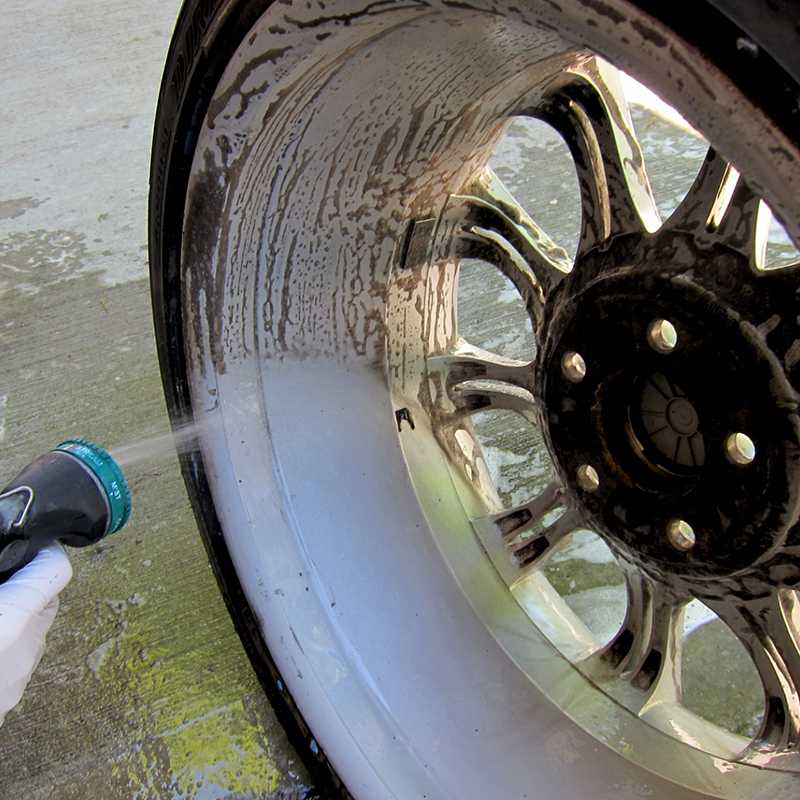
There are a lot of pollutants on the roads all the time. First of all - mechanical components, sand, earth. In winter, the tracks are actively sprinkled with reagents, they are chemically active, easily stick to the disks. The road surface is constantly oil, soot from the brakes.
Dirt on wheels can cause imbalance. If pollution accumulates in one place, the weight balance is broken, and the wheel can no longer work with the same efficiency. Already this is enough to positively answer the question of whether it is necessary to wash the wheels.
Reagents, used oil greatly accelerate corrosion. They corrode the coating of the rim, which leads to direct contact with moisture.
The tire does not tolerate constant contact with reagents, soot and other elements. Now rubber compounds are made stable, it is not possible to completely avoid problems, another reason to clean the wheels regularly.
If you wash the wheels and the car by hand, you need to use separate sponges for the rims and change the water. Otherwise, all the dirt from the wheels will be carried throughout the body.
The best option is to first spray the rim with water, for example with a hose. This way you can remove the strongest accumulations of sand, the remaining ones will soften a little. You can just use a bucket of water.
In winter, washing discs with a hose is a good idea. Water can get on the brakes and freeze. Always after the "bath procedures" in the cold season, it is necessary to dry the brakes. To do this, you will need to drive about a kilometer, periodically gently pressing the brake.
Once every few months it is worth removing the rims and washing them from the back. The frequency of this procedure directly depends on the characteristics of the operation of the car. With frequent trips on the primer, it is worth washing the inside of the disc more often.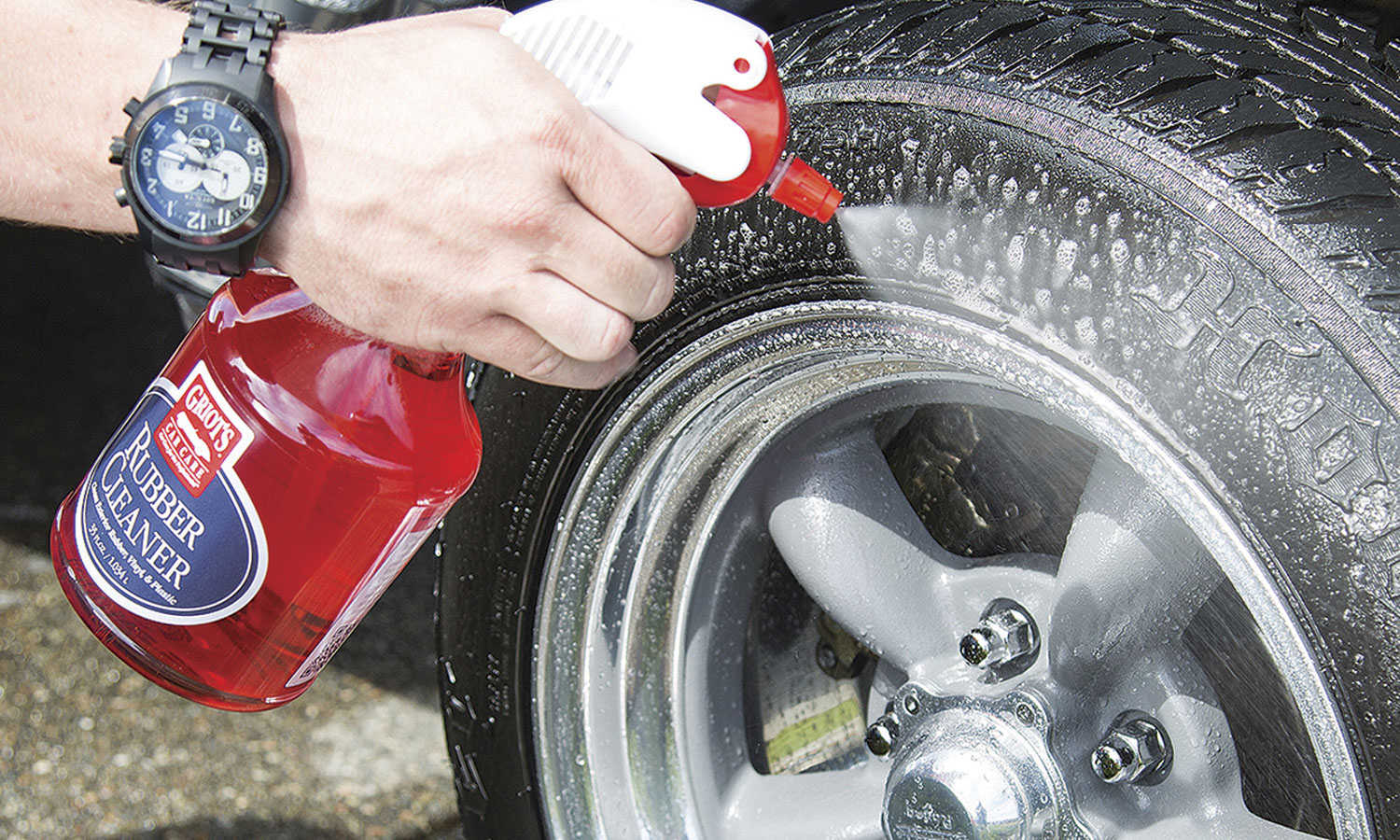
To wash the rim, use a special shampoo. After all, a tire is always assembled with a disk, and rubber makes special demands on detergents. Shampoos are divided into two categories:
Absorbent shampoos are considered the most effective. They dissolve dirt more efficiently, but require careful removal. It is imperative to wash them off. We list the main nuances.
In general, the work is not difficult and does not require skills. Deal with the question of how to wash the wheels every driver can.
An important point is the washing of rubber. Here you need to be very careful, because the tire can interact with the cleaning agent.